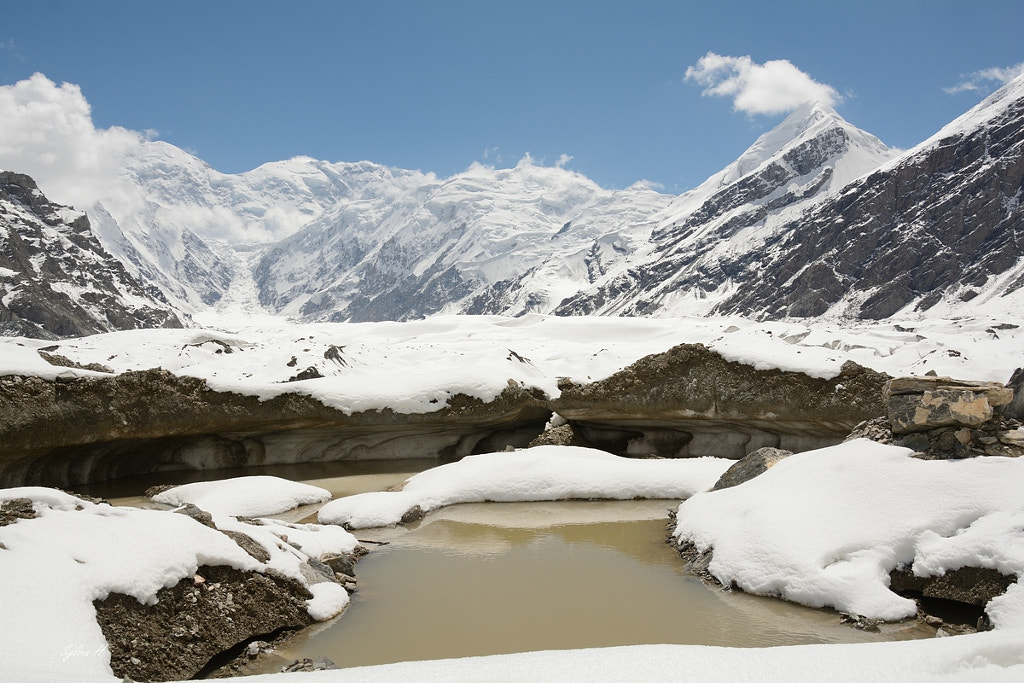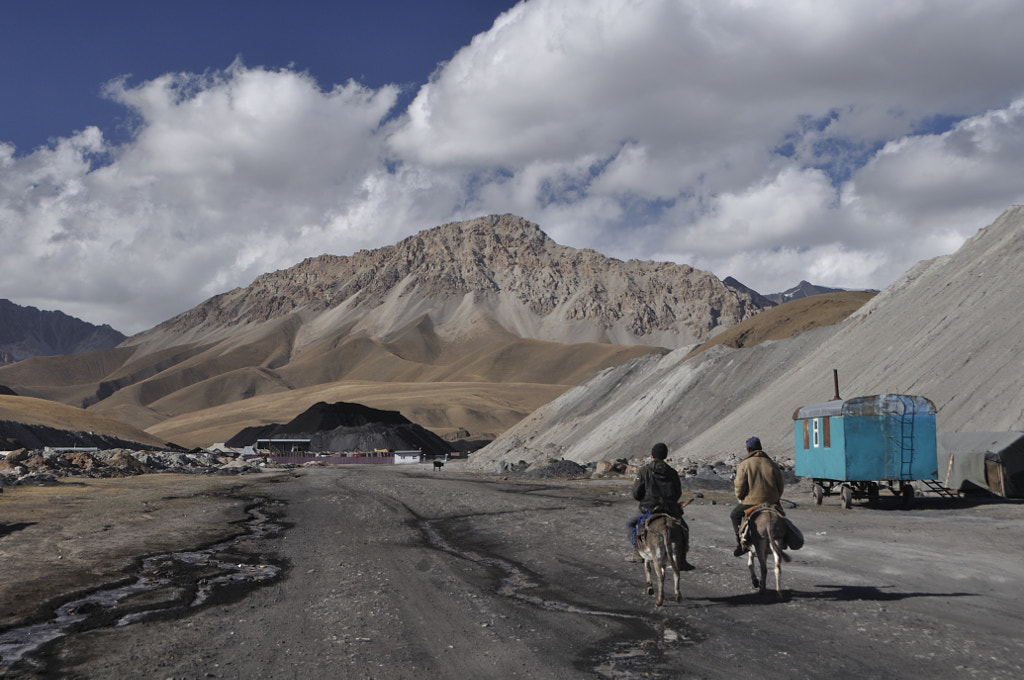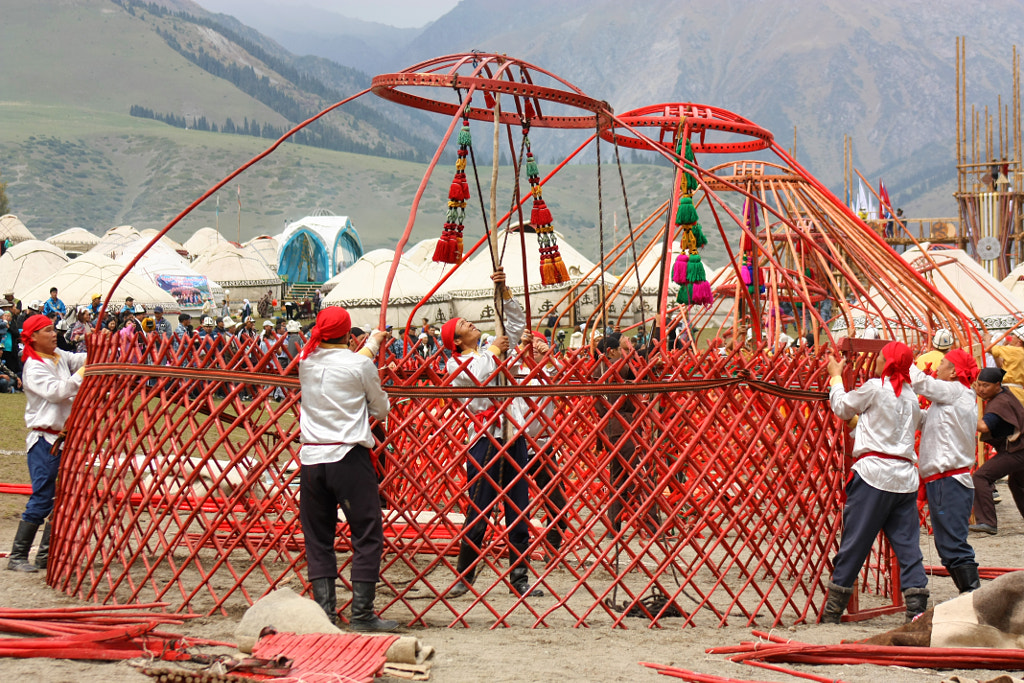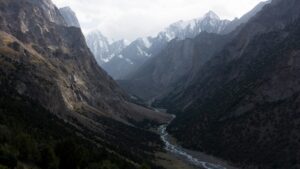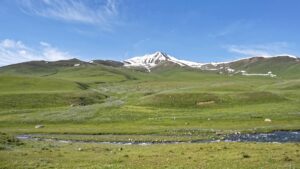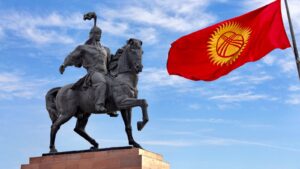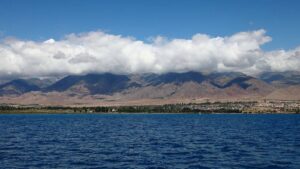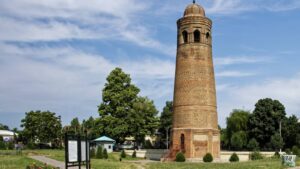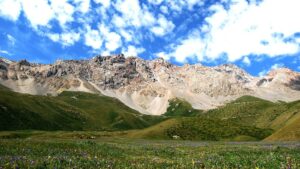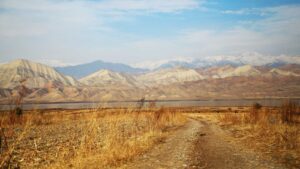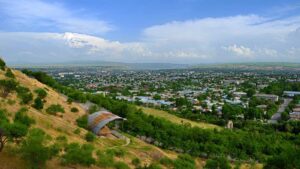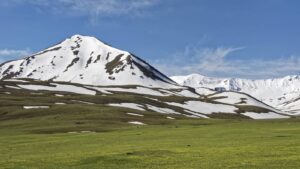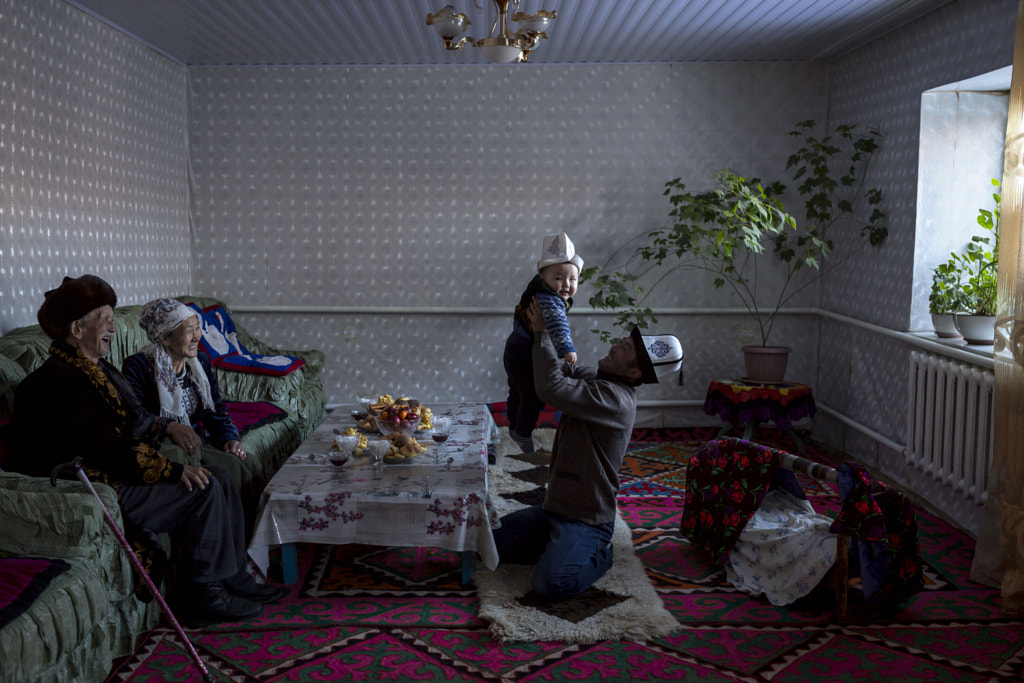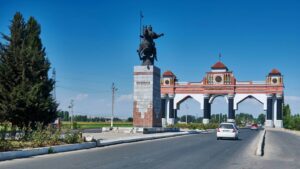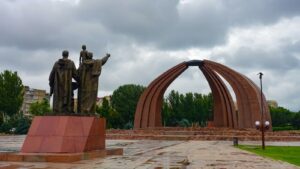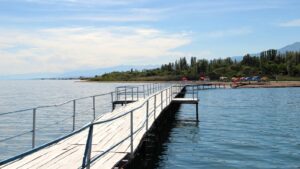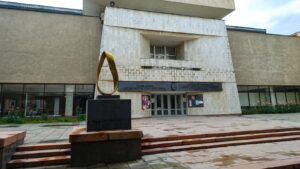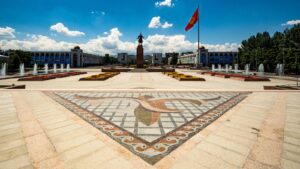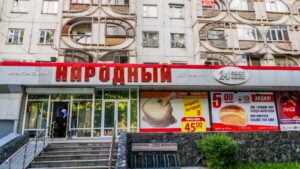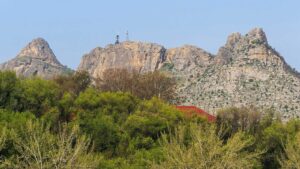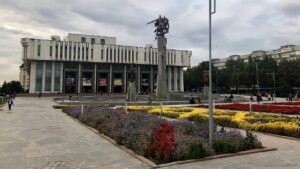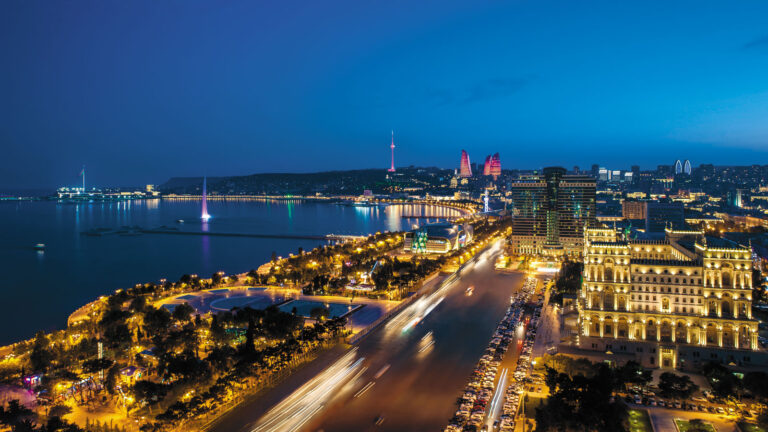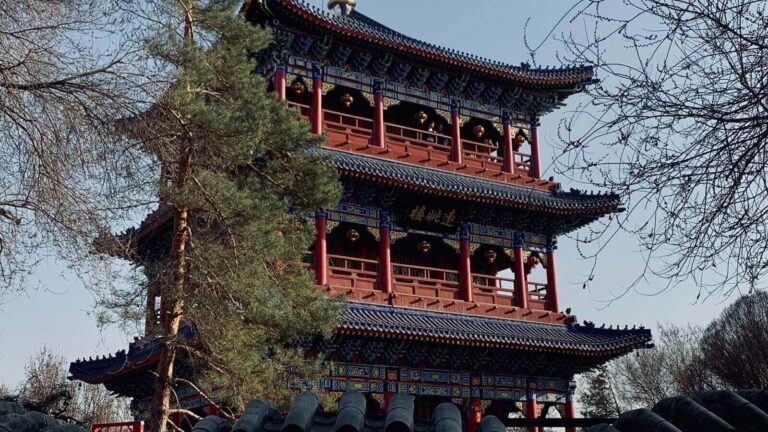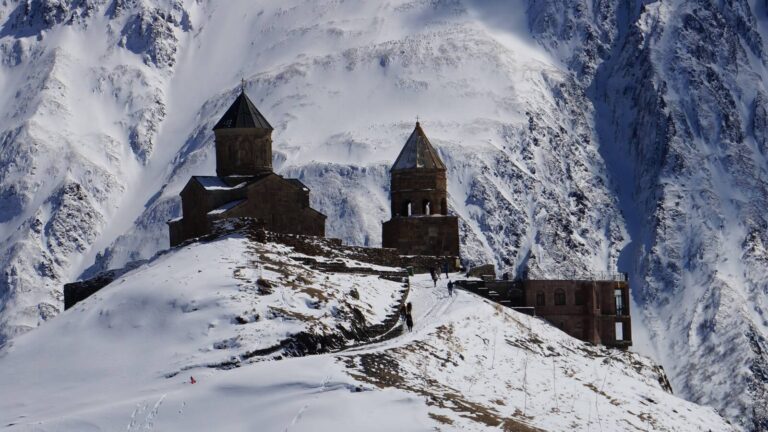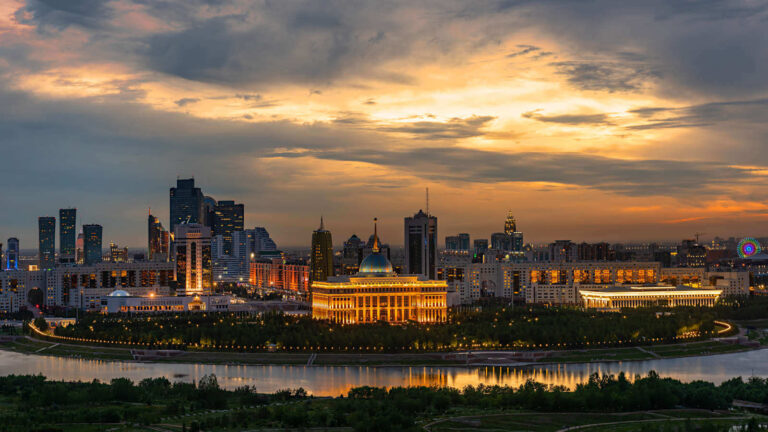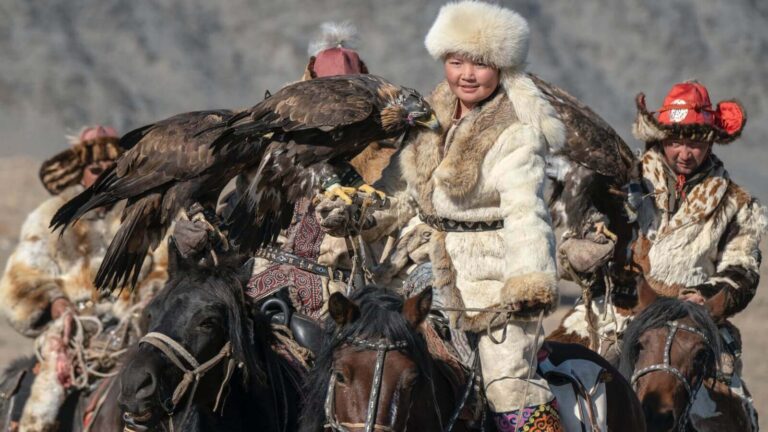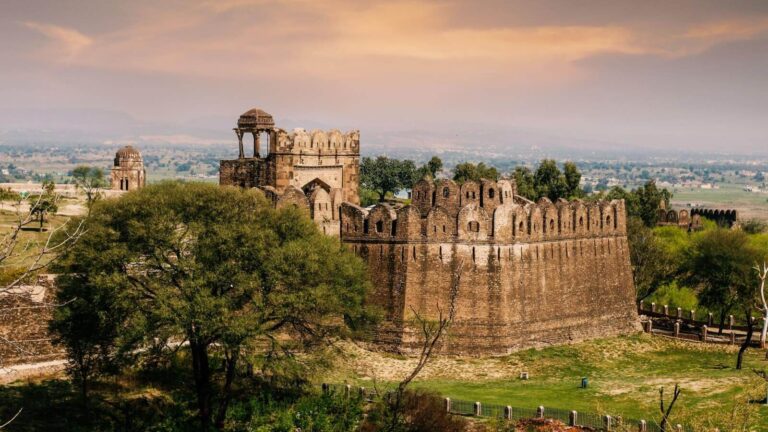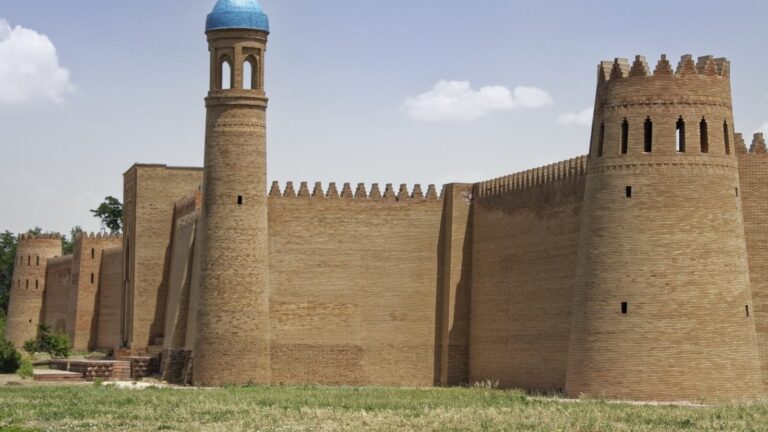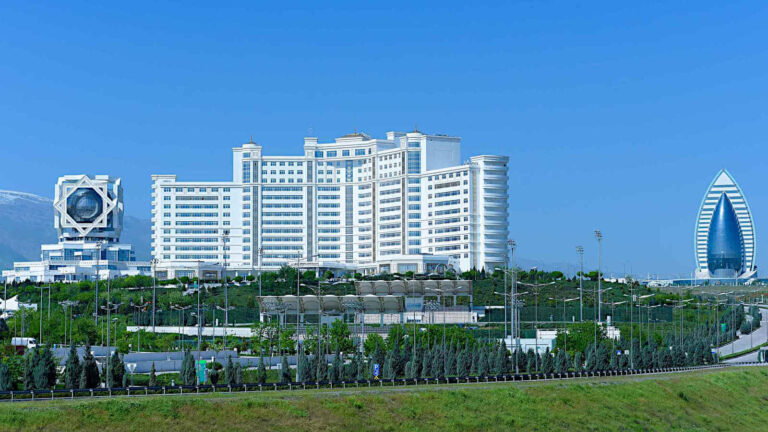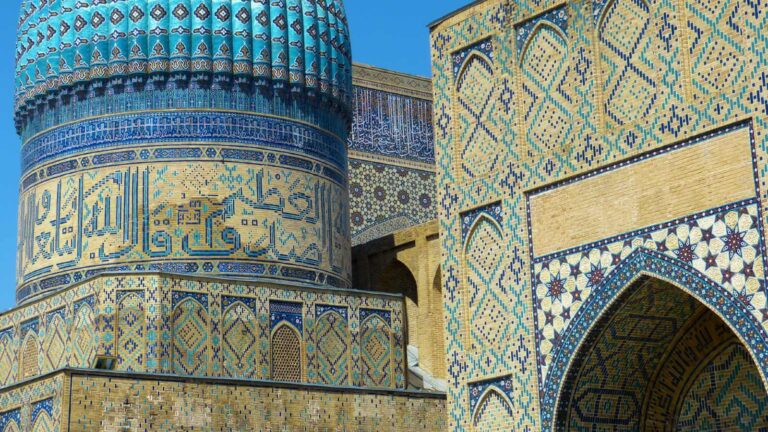The Kyrgyz Republic, more commonly referred to as Kyrgyzstan, is a small country known to travellers for its mountainous terrain, and its culture of nomadic tradition and hospitality.
The Kyrgyz Republic is an amazing mountainous country with a huge number of various attractions of both artificial and natural origin on its’ territory. It is famous for its mountains (Central Tien Shan and Pamir-Alay) with high snowy peaks, every year climbed by hundreds of mountain lovers, picturesque lakes, turbulent rivers, glaciers and endless green forests.

Language: Kyrgyz, Russian
Currency: Som
Capital City: Bishkek
Population: 7 million
History
The first reference to Kyrgyz has been found in Chinese historical chronicles (Sym Tsyan) dated 201 BC. The Kyrgyz Khaganate existed over 740-820 which dominated a significant part of Central Asia and Siberia.
In the XIV century ancient Turkic ethnonym “Kyrgyz” bearers lived in the northeastern boundaries of Mogolistan. Consolidated on the Tien Shan in XV-XVI centuries, the Kyrgyz tribes together with the Mughal tribes formed a united Kyrgyz ethnos. At the same time the Kyrgyz, in alliance with the Kazakhs, acted against the Yarkand Khanate, the Sheibanid State and the Oirat Khanate.
By 18th century the entire territory of modern Kyrgyz Republic came under the Dzungar Khanate sway, and later, in the beginning of the 19th century, became part of the Kokand Khanate.
As a result of the Russian-Kokand war, caused the liquidation of the Kokand Khanate in 1876, the annexation of the territory of modern Kyrgyz Republic to the Russian Empire was completed. In 1916, the Kyrgyz took part in the Central Asian uprising.
The process of national delimitation began after the Soviet regime establishment in Turkestan. In 1924, the Kara-Kyrgyz Autonomous District was formed, later transformed into the Kyrgyz Soviet Socialist Republic in 1936.
On 30 October 1990, the Kirghiz SSR was renamed to the Socialist Republic of Kyrgyzstan; on 15 December, after declaring its state sovereignty, it was renamed again to the Republic of Kyrgyzstan. On 31 August 1991, it transformed into independent Kyrgyz Republic.
Geography and Nature
From 132m above sea level near the Uzbek border to the 7439m Peak Jengish Chokusu, the Kyrgyz Republic packs 7307m of vertical elevation difference into a territory of just less than 200,000 square kilometres. Over 6,500 glaciers are spread across the territory, whose meltwater flows down from the alpine zone through dense forests to the lowland plains – where populations are mainly agrarian communities – eventually flowing into the Syr Darya in Uzbekistan.
The climate of Kyrgyz Republic is determined by its geographic location. The main part of the country is located in a temperate climate zone with a continental type of climate, and only the southern part belongs to the subtropical zone with a continental type of climate.
As Kyrgyz Republic is mountainous country, high-altitude climate zones are distinguished on it’s territory. Climate changes from continental to sea on the territory of Lake Issyk-Kul. All four seasons are clearly defined. In the foothills and valleys, it is hot in summer, and in the highlands it is cool and even cold.
There are more than 6580 glaciers in Kyrgyz Republic with a total area of 8047.8 km². It has significant water resources – 28,000 rivers and streams with a total length 10 km, flowing rapidly along thee mountain ranges and creating hundreds of beautiful waterfalls when falling from a heights. More than 2000 artificial reservoirs and lakes. 90% of all lakes are alpine.
Economy
The industry is represented by energy and extractive sector. There are enterprises in consumer goods industry and food industries. A significant part of agriculture products are exported. Tourism is an important source of income for the Kyrgyz Republic.
The main resources mined at present on the territory of republic are gold (Kumtor reserve), mercury (Khaidarkan deposit), tin and tungsten (Trudovoe deposit).
The share of the Kyrgyz Republic in the total reserves of energy is 0.037% of the world’s total (179 countries), whereas 96,5% of these resources is accounted for by coal.
Key players of the energy sector industry are the following: 1. JSC “National Energy Holding” 2. Hydropower plants of Lower Naryn HPP Cascade
Kyrgyz Republic rural sector is dominated by peasant and household farms.
For 2018, the average salary was 15,778 soms per month, which is $ 230 US dollars. As of 2019, the minimum wage is KGS 1,750 (US $ 25.11) per month. As of 2019, the average salary was 16,478 soms. US $ 235.
The average monthly salary in the Kyrgyz Republic stood at 230 USD in 2018, 25 USD in 2019, and 235 USD in 2020.
People and Culture
While the Kyrgyz comprise nearly three-quarters of the population, the country is home to at least 80 nationalities. The next largest groups are Uzbek (around 15%) and Russian (roughly 5%), but also include Uyghurs, Dungans, and many others.
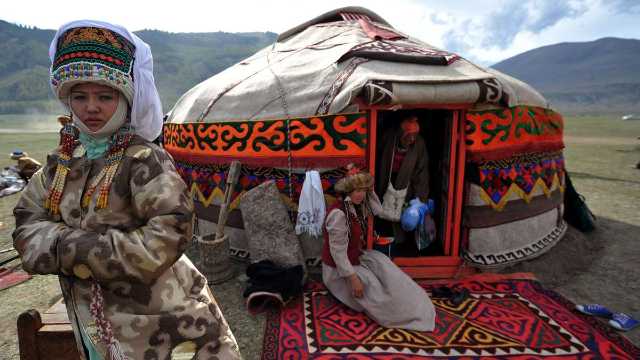
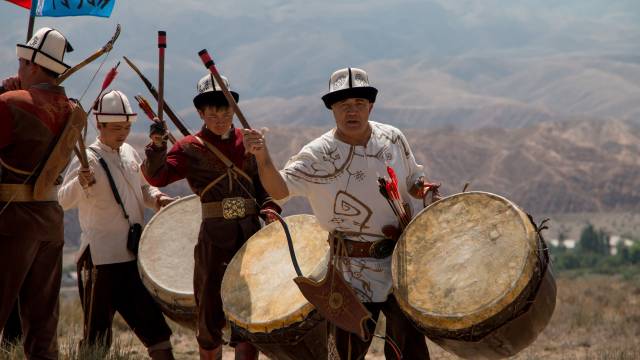
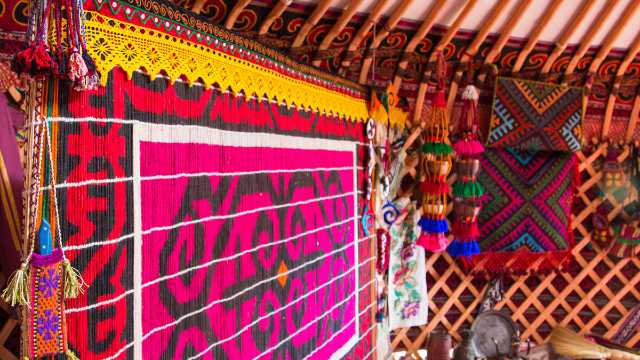



Important Dates
- Kalpak Day March 5
- International Women’s Day March 8
- Nooruz March 21
- Constitution Day May 5
- Victory Day May 9
- Independence Day August 31
- Days of History and Commemoration of Ancestors November 7-8
Most travellers arrive to the Kyrgyz Republic by air, primarily to Bishkek’s Manas airport (FRU) or to Osh airport (OSS). Turkish Airlines and Pegasus connect the country to Istanbul with frequent flights, while Air Arabia and FlyDubai connect regularly to the United Arab Emirates. Other direct flight options include Kuwait, Uzbekistan, Kazakhstan and China, as well as regular connections to Russia, South Korea and other destinations.
Overland travel is typically possible to all neighbouring countries, with Bishkek to Almaty (Kazakhstan) and Osh to Fergana (Uzbekistan) the most popular. Travellers entering or exiting the country with an e-visa should check which border crossings accept these documents before travel. The Kyrgyz-Tajik border has been closed for overland traffic in 2023 due to longstanding tensions between the two countries.
The weather in the Kyrgyz Republic is usually sunny, it rains on average only about 70 days a year. The climate is continental because Kyrgyz Republic is located far from the oceans. While summers can be quite hot in cities, mountain regions are nearly always cool, even during the hottest months. Winters are cold and snowy, especially high in the mountains. The days are generally much warmer than the nights, but in general, the climate is quite pleasant, with four distinct seasons.
In Bishkek, winters are mostly sunny, but often with fogs and snowstorms. The average daily maximum in winter reaches 3°C. In spring, the weather in the Kyrgyz Republic is usually mild, with the first really hot days in May and June. Summer’s average temperatures is 31°C, but it can rise to 45°C.
KYRGYZSTAN WEATHERDiscover Kyrgyz Republic’s best Destinations on each Season
Citizens of 78 countries are eligible to enter the Kyrgyz Republic for at least 30 days, with the majority of the remainder eligible for simplified e-visas in advance of their arrival.
Information Department of the Ministry of Foreign Affairs of the Kyrgyzstan: https://mfa.gov.kg/ru/osnovnoe-menyu/konsulskie-uslugi/konsulskie-vizovye-voprosy/izovye-i-bezvizovye-rezhimy
No vaccinations are required to enter the Kyrgyz Republic, though travellers intending to spend time in remote regions might consider arranging vaccines for bubonic plague in advance.
Official website of the Ministry of Health of the Kyrgyz Republic: http://med.kg/ru/
According to the Government’s Resolution “On issues on vehicles, installations and equipment registration” dated June 23, 2017 No. 407, the following articles are subject to mandatory performance:
- https://www.gov.kg/ru/npa/s/236
- Citizens of Vienna Convention member states temporarily staying in the territory of the Kyrgyz Republic have the right to drive motor vehicles with a national driver’s license issued in a foreign country and meeting the requirements of the above Convention.
- A foreign person holding a national driving license of a foreign state that does not meet the requirements of the stated Convention must have an international driving license aside of the national driving license.
Main Regions of Kyrgyz Republic
Most travel within the Kyrgyz Republic is overland, in private vehicles, public minibuses and shared taxis. All major cities and most well-populated areas are connected (though not always with daily services), however remote areas with small populations typically require private transportation.
Major cities in the Kyrgyz Republic are served by flights – Bishkek, Osh, Jalalabad, and Batken all see regular domestic services, with seasonal flights to Issyk-Kul’s Tamchy airport. Work is currently underway to reopen Karakol airport, but no firm timeline has been established. While train service exists from Bishkek to Balykchy, it is considerably slower than other options.
Electricity
All power sockets in the Kyrgyz Republic provide a standard voltage of 220V with a standard frequency of 50Hz. Kyrgyzstan uses power outlets and plugs of types C & F. However, in some hotels there are also Type G outlets (three rectangular pins in a triangular pattern).
Phones
Kyrgyz Republic country code +996, Bishkek +996312, Jalal-Abad +99637, Karakol +99639, Naryn +99635, Osh +99632.
Wi-Fi Access
Free Wi-Fi zone meets visitors of the Kyrgyz Republic at the airports of large cities, accompanies in many public places of the capital (cafes, restaurants, nightclubs, etc.), and is more limited in the provinces.
Find free Wi-Fi spots in Bishkek here and in Osh here.
In popular recreation areas, for example, in Issyk-Kul, there is Wi-Fi in some boarding houses and guest houses. There is no WiFi on the beaches, so carrying a 3G modem is best choice, which easily connects to the Network through any Kyrgyz mobile operator, even in the mountains.
Internet packages from mobile operators with GSM standard start at a price of 0.25 soms (≈0.0053 USD) per 1 MB. The price depends on the amount of purchased traffic.
In major Kyrgyz cities, the full range from luxury hotels to budget backpacker hostels are available – typically through individual sites or Booking.com. In rural areas permanent accommodation is mostly in the form of family-run guesthouses, while in nature tourist-focussed yurt camps are often available.
Local cuisine in the Kyrgyz Republic is very cheap. The food is usually served with flat bread and tea, green or black. In the firts days, you should be careful, because fatty and heavy food prevails in traditional cuisine, unusual for Europeans.
Gastronomy
Traditional Kyrgyz cuisine is centered mainly around meat.. It is worth trying manty, plov, shashlyk, meat with vegetables. Manty are dumplings filled with meat and cooked in a special way. Manty is cooked and served almost everywhere in the Kyrgyz Republic.
Laghman, shorpo and chuchvara are the soups you need to try. Ashlamfu is a spicy cold noodle soup with lots of vinegar and chili. Freshly baked flat bread, samsas, different meat and cheese pastries are also sold everywhere.
In the mountains it it worth trying homemade ayran (something between kefir and yogurt) and kymys – the number one national drink, in the Kyrgyz Republic, mildly alcoholic that is made of fermented mare’s milk. Bozo and shoro are the fermented grain based drinks with a low alcohol content. At the bazaar you can always buy fresh in-season vegetables and fruits.
In the Kyrgyz Republic it is safe to drink cold water straight from the tap. However, drinking hot tap water isn’t a good idea.
Tipping
Feel free to tip 5-10% if you receive an excellent service.
Currency and Exchange Rates
Som is the national currency of the Kyrgyz Republic. Som is devided into 100 Tyiyn. Get live exchange rates in: https://www.nbkr.kg/
ATMs on the Visa network are widely available in major cities, though Mastercard and Maestro are far less common. Currency exchange is often available in smaller towns as well, though rates are worse the farther one travels from a major population centre.
Credit Cards
In the Kyrgyz Republic, you can pay both in cash and by bank card (Visa, Master Card). Credit cards can be used in restaurants, shopping centers, grocery stores and hotels in the capital. Also, there are many ATMs in Bishkek and other large cities, so there were no problems with withdrawing money.
Business hours
Banks are open from 9.00-9.30 to 17.00-17.30 from Monday to Friday, closed on Saturday and Sunday.
Kyrgyz Republic is a fairly safe and tourist-friendly country. However, as elsewhere, there are some things you need to know in order to feel as comfortable and safe as it is possible.
The Kyrgyz will come to any stranger’s aid in almost any matter. For example, do not be surprised if several friendly people will volunteer to help you find a hotel at once and they will spend a lot of their personal time on it. Not a single Kyrgyz will miss an opportunity to chat about his life.
Religion
The Kyrgyz Republic is a Muslim country, but there are also religions such as Christianity, Buddhists and others.
Ceremonies associated with the birth and upbringing of children, marriage, wedding, cooking play a special role in the life of Kyrgyz people. Islamic canons, ancient forms of magical practice and Buddhist traditions are combined in this rituals.
Priest, storytellers of folk ballads and legends are highly respected in the country. Despite this, Kyrgyz Republic is a secular state and the community practices the religion tolerance.
Dress code
Since the climate is very hot and dry, it is also necessary to prevent the dehydration, especially between April and October. It is recommended to have sunscreen, light clothes made of thin natural fabric (in summer) or warm mountain clothes (in winter and when climbing), sunhat and repellent. Particular attention should be paid to shoes – the sole must be thick and reliable, and the upper must be well-ventilated (the requirements for mountain shoes are appropriate).
If a woman doesn’t want to provoke too much attention, a modest style is always a working option. It is better to wear a long or medium length skirt or pants, T-shirts, blouses with covered shoulders. When visiting religious sites women should cover shoulders and knees and wear headscarves. Men should also avoid wearing shorts in mosques and mausoleums.
Regulations
The country has quite clear rules on alcohol consumption. The use of narcotic drugs or psychotropic substances, as well as drinking alcohol on the streets, stadiums, squares, yards of apartment buildings, in all kinds of public transport and in other public places or appearance in public places intoxicated is banned.
In large cities, a walk at night can be quite a good pastime. However, it is better to avoid poorly lit streets, as well as drunken companies.
Traveling by taxi is generally a safe option, but like any other form of transportation, it’s not entirely without risk. Whenever possible, call for a taxi instead of hailing one – your hotel concierge or guest-house owner can happily call a taxi for you, free of charge.
When cycling, you should ride closer to the edge of the road, dismount when crossing intersections and pedestrian crossings.
In case of Emergency
Police: 102
Ambulance: 103
Medical Rescue Service: 110
Search and Rescue: 161
Tourism Information Centers
- Tourist hospitality center “Bosogo” – 7000
- Bishkek phonebook – 109



